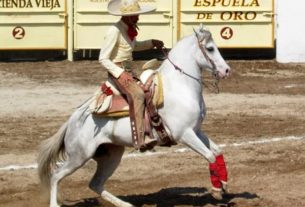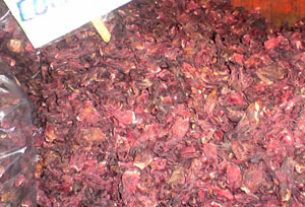Mexican Kitchen
One of the standard pieces of advice found in books and magazines on diet and nutrition is to “eat what’s in season.” Here in Mexico, that advice is easy to follow, simply because the available produce varies so much from the rainy season to the dry season.
By early November, the variety of different colored corn diminishes, along with the abundance of poblano chiles, huitlacoche, squash blossoms and, alas, wild mushrooms. The last of the seasonal rains means my last chance to go to market day and find the “mushroom ladies” who come down from the sierra to sell what they have gathered.
Huge, flat baskets are filled with an array of mushrooms of all colors, sizes and shapes, from the spiny, red “lobster mushrooms” to the delicate yellow mushrooms called “coral” in English and escobetas, or “brooms” in Spanish.
The variety of local names is interesting and fun to learn, but scientific terms are helpful, especially when sharing recipes, because of the regional differences in common names. Morchella esculenta, for example, is known as a morel in English, but has various names in different parts of Mexico, including elotitos (little corn cobs) menudo (tripe) and viejitos (little old men.)
Differences in names aside, mushrooms were gathered by nearly all the pre-Hispanic people of Mexico’s high central plateau who were lucky enough to live in climates where the altitude and rain created favorable conditions for the appearance of wild mushrooms. The meaty texture of mushrooms made them ideal for cooking in stews with chiles and herbs, for filling tamales, or even for making a mole de hongos, a mushroom mole. Mushrooms in general were widely known by their Nahuatl name nanacatl, and the places where they grew were called nanacamilpa.
The mushroom foraging-and-cooking tradition is still carried on by the indigenous people of the mountain regions, who have lately been joined by foreign foodies and mushroom experts. Tours to mushroom-rich areas of Mexico have become more common, especially in the sierra regions of Oaxaca and Tlaxcala.
Tlaxcala may be Mexico’s smallest state, but it has the largest variety of wild mushrooms in the country and has become the focal point of foraging expeditions. We were fortunate enough to have been included in a couple of expeditions led by mycologists from the mushroom laboratory at the Autonomous University of Tlaxcala.
Our group, participants in Excursiones de Hongos Mexicanos- Mexican Mushroom Tours- foraged along the slopes of the beautiful La Malinche volcano. At over nine thousand feet, and covered with pine forest, this area provides excellent conditions for the development of seventy-three edible species, used in making soups, quesadillas, bean dishes, moles and pipians. Fried with chiles, onions, garlic and herbs, wild mushrooms make a great taco filling. Our group enjoyed many of these dishes, prepared fresh from foraging, at Mexican Home Cooking, located in the countryside outside Tlaxcala’s colonial capital.
The mycologists were essential for helping in the identification of edible species, and for those not familiar with wild mushrooms it is crucial to have expert advice. A good mushroom guidebook will provide clear descriptions and photos as well as advice on how, when and where to collect. The Ultimate Mushroom Book, by Peter Jordan and Steven Wheeler, has been especially helpful when used in conjunction with the Autonomous University of Tlaxcala’s book of traditional regional wild mushroom recipes. The photos and scientific names provided in both publications were tremendously helpful in preparing some of the wonderful mushroom recipes at home.
The following recipes suggest certain species of wild mushrooms, but if these are unavailable, cultivated mushrooms may be substituted. For those living in northern latitudes, the wild mushroom season is just beginning as the rainy season in Mexico draws to an end.
- Caldo de Hongos Silvestres: Wild Mushroom Broth
- Pollo al Ancho con Setas: Chicken with Anchos and Oyster Mushrooms


